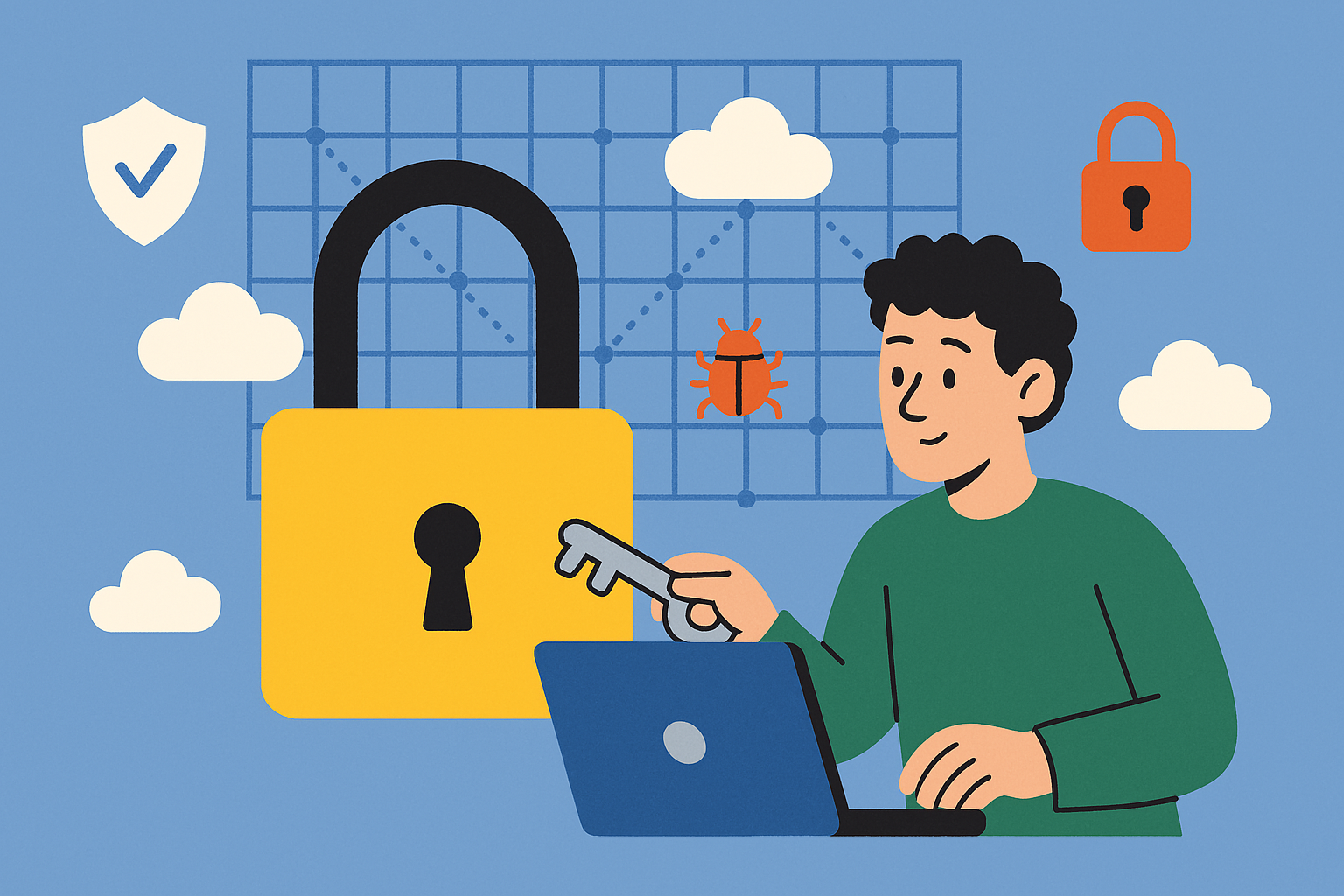The Imperative of NoSQL Database Security
In an era defined by data-driven decisions, NoSQL databases have become a linchpin in modern data architectures. Their ability to scale horizontally and adapt schema-less designs makes them a natural fit for applications requiring agility and scalability. However, while these databases offer many benefits, they also introduce new challenges in the realm of security. Given their unique characteristics, NoSQL databases mandate a focused approach to security measures and best practices. This article aims to delve into these challenges and the precautions that you need to consider.
The Security Landscape of NoSQL Databases
First, let's set the stage by discussing what makes NoSQL databases distinct. NoSQL databases are schema-less, meaning they are more forgiving of a variable data structure, thus providing flexibility in data modeling. This architecture is advantageous but can create loopholes where unauthorized data can be inserted or accessed. Furthermore, NoSQL databases are designed for horizontal scalability, a feature that's excellent for handling large datasets but can complicate the security measures that often assume a more monolithic, vertically-scaled architecture.
Given these distinctive characteristics, traditional security frameworks and mechanisms often used for SQL databases are not directly translatable to NoSQL systems. NoSQL databases have their own set of vulnerabilities, which can range from injection attacks to unauthorized data exposure. Therefore, the question is not whether to secure them but how to do so effectively, considering their unique architecture.
Authentication and Authorization
Robust user authentication is the first line of defense in any database system. NoSQL databases can integrate with various authentication mechanisms like LDAP, OAuth, and Kerberos to ensure that only authorized users can access the system. In an ideal setup, multi-factor authentication (MFA) should be the norm rather than the exception. The need for solid authentication becomes even more urgent in a distributed architecture where databases may exist in different nodes or even different geographical locations.
Authorization—deciding who gets to do what—is no less important. Role-Based Access Control (RBAC) and Attribute-Based Access Control (ABAC) are commonly employed techniques in NoSQL databases to ensure fine-grained control over who can read or write specific data. These models can be nuanced, accommodating a variety of roles and attributes that can be as broad as organizational roles or as specific as geographical location or time-based rules.
Data Encryption
Protecting the data itself through encryption is another pillar in securing NoSQL databases. Encryption strategies can be broadly divided into two categories: in-transit and at-rest. For data in-transit, protocols like TLS are often recommended, while for at-rest data, encryption solutions based on algorithms like AES are advisable.
Data Integrity and Auditing
Data integrity is a cornerstone in the trustworthiness of any database. Techniques like checksums and digital signatures can ensure that data has not been tampered with, either accidentally or maliciously. But ensuring data integrity goes beyond just protection against modification; it also involves a solid backup and recovery strategy to protect against data loss.
Auditing capabilities are essential to track who did what within the database. Most NoSQL databases offer built-in auditing features that can record activities such as data access, modifications, and permission changes. These capabilities are often crucial for compliance with regulations like GDPR in Europe or HIPAA in the United States, which mandate strict controls over data and its lineage.
Secure Configuration and Patch Management
Secure configuration lays the foundation for a robust security architecture in NoSQL databases. While vendors often release databases with generic settings to make them accessible and easy to install, these configurations may not be designed with strict security requirements in mind. Default settings may include open network ports, unnecessary services running, or overly permissive access controls, any of which can create vulnerabilities ripe for exploitation.
In the case of NoSQL databases, configurations can vary significantly depending on the specific type of database—be it document stores like MongoDB, key-value stores like Redis, or wide-column stores like Cassandra. Each type may have its own set of configuration best practices. For example, MongoDB might offer transport encryption as part of its configuration, whereas Redis might rely more on network-level security. Thus, the first step in secure configuration involves understanding the specific features and vulnerabilities of the chosen NoSQL database.
A well-thought-out firewall configuration is another critical aspect of this process. Firewalls act as gatekeepers, controlling the incoming and outgoing network traffic based on an organization’s previously determined security policies. Properly configured firewalls can prevent unauthorized access to the database, and their importance can't be stressed enough in a NoSQL distributed architecture, where data is spread across multiple nodes or even multiple data centers.
Network segmentation can also play a pivotal role. By isolating data and services based on their security requirements, network segmentation limits the scope of a potential breach. For instance, sensitive data can be isolated in a high-security zone with stricter access controls and monitoring, whereas less sensitive data may reside in a different zone with more lenient controls.
Beyond initial setup, maintaining a secure configuration requires continuous vigilance. Database software, like any other software, is an evolving entity. As security vulnerabilities are discovered, it becomes essential to patch them promptly. In a distributed NoSQL environment, this patch management process can be challenging but is essential. Each node in the distributed network must be updated, requiring synchronized efforts to avoid downtime or data inconsistency.
Patch management becomes even more complex when dealing with databases that are part of a larger ecosystem, integrated with various other services and applications. Compatibility checks are essential before applying any patches to ensure that the update doesn’t break any existing functionalities. Automation tools can assist in streamlining this process by testing patches in an isolated environment before a broader rollout, thus reducing the risk of system disruptions. The goal is to maintain a balance between uptime and security, making sure one doesn’t compromise the other.
It's worth noting that patch management isn't solely about fixing vulnerabilities; it's also about maintaining the operational efficiency of the database. Updates often come with performance improvements and new features that can enhance the database's overall utility and responsiveness. Therefore, a well-structured patch management strategy not only bolsters security but also contributes to maintaining an optimized, high-performing database system.
By giving the deserved attention to secure configuration and ongoing patch management, organizations equip themselves with a robust line of defense against the evolving threats targeting NoSQL databases. This proactive approach significantly mitigates the risk of data breaches and unauthorized data access, laying a secure foundation for the enterprise's data management needs.
Monitoring and Anomaly Detection
Security is not a one-time activity but a continuous process that involves monitoring and timely response to potential issues. Real-time monitoring systems can track access patterns and other database activities. Any deviations from the norm can then be flagged for further investigation. Advanced systems even use machine learning algorithms to automatically identify and respond to anomalies in behavior, thus adding a layer of intelligence to security management.
Security Standards and Compliance
In the fluctuating landscape of cybersecurity, where threats evolve at an unprecedented rate, adhering to established security standards and compliance frameworks can serve as a navigational beacon. These guidelines offer more than just a checklist of security controls; they provide an overarching governance model that takes into consideration the technical, organizational, and even the human elements of security.
In the context of NoSQL databases, the need for compliance becomes especially pertinent due to the distributed nature of these databases. Unlike traditional databases where compliance could be assured through centralized controls, NoSQL databases often span multiple servers, locations, and even jurisdictions. This raises intricate compliance challenges, especially when dealing with regulations that have geographical constraints, such as GDPR in the European Union, which mandates stringent data protection measures and imposes heavy penalties for non-compliance.
Compliance with such regulations requires a multi-faceted approach. Beyond technical solutions like encryption and access controls, it also involves procedural and administrative measures. For instance, Data Protection Impact Assessments (DPIAs) may be necessary to evaluate how personal data is processed and to identify and mitigate risks to data subjects. Likewise, organizations may need to appoint a Data Protection Officer (DPO) solely responsible for overseeing data protection strategy and its implementation to ensure compliance with GDPR requirements.
Another critical standard to consider is ISO 27001, an international standard for managing information security. ISO 27001 certification demands a systematic examination of an organization's information security risks, taking into account vulnerabilities and impacts. The standard is comprehensive and considers not just IT but also people, processes, and even the physical security of assets. Adherence to ISO 27001 can be particularly beneficial for organizations using NoSQL databases, as it provides a robust framework that covers multiple aspects of security that are relevant to a distributed, schema-less architecture.
But the conversation about standards and compliance is not complete without mentioning industry-specific regulations. For example, in the healthcare sector, compliance with the Health Insurance Portability and Accountability Act (HIPAA) is critical. HIPAA outlines rules for the secure handling of sensitive patient data and imposes stringent penalties for breaches. Ensuring HIPAA compliance in a NoSQL database would involve specialized access controls to protect health information and extensive auditing capabilities to track who accessed what data, when, and for what purpose.
The Payment Card Industry Data Security Standard (PCI DSS) serves a similar function but in the context of payment card transactions. It outlines requirements for the secure processing, storage, and transmission of credit card data. In the realm of NoSQL databases, this might translate into tokenization of credit card numbers and rigorous logging and monitoring of database access.
Compliance is not a one-time achievement but an ongoing process of assessment and adjustment. This is especially true in a NoSQL environment where the flexible, scalable nature of these databases means that the system's architecture is often subject to change. Regular audits, both internal and external, are crucial for maintaining a state of continuous compliance. These audits can help identify any new vulnerabilities that may have been introduced during system changes and provide a roadmap for remedial action.
Thus, adherence to security standards and compliance frameworks doesn't just mitigate risks; it also builds trust. Clients and stakeholders are more likely to trust organizations that adhere to recognized standards, knowing that their data is being managed and protected diligently. In the words of cybersecurity expert Bruce Schneier, "Security is not about risk avoidance; it's about risk management." And in the arena of NoSQL databases, standards and compliance frameworks provide the rulebook for effective risk management.
Best Practices
As a final takeaway, let’s consider some overarching principles that should guide the security measures for NoSQL databases. The principle of least privilege—providing only the minimal accesses or permissions necessary to perform a function—is paramount. Network segmentation, whereby data and services are isolated according to their security requirements, offers another layer of security by limiting the impact of a potential breach.
The Road Ahead for NoSQL Security Measures
Securing NoSQL databases presents unique challenges that require thoughtful strategies and robust implementation. From ensuring strong authentication and authorization to focusing on data encryption, integrity, and auditing, each aspect requires its own set of tailored measures. Compliance with security standards and best practices, continuous monitoring, and a proactive approach to patch management complete the picture. Security is not just the responsibility of the database administrator but should be an organizational priority, especially when NoSQL databases are involved.
 is now
is now


